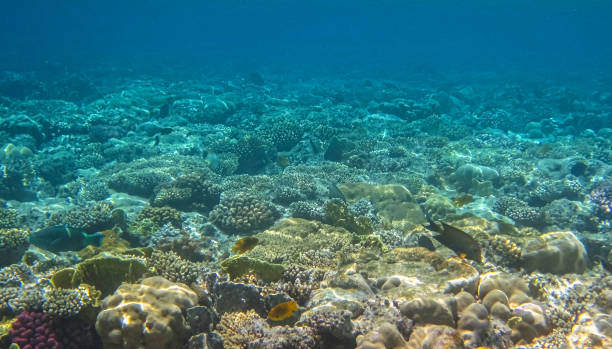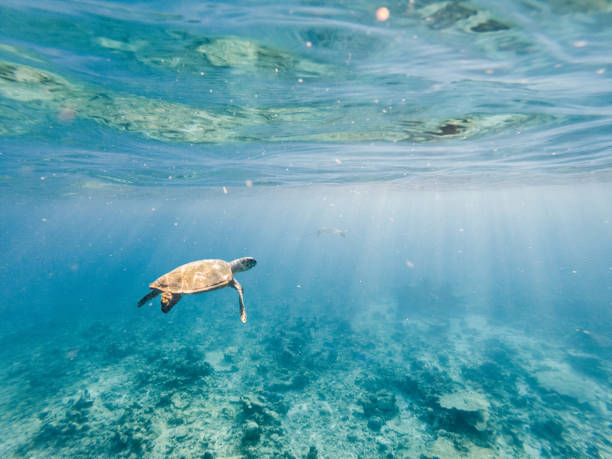
Introduction
Imagine descending into an alien world, teeming with undiscovered creatures and hidden landscapes. This is the essence of ocean exploration. Despite covering over 70% of Earth’s surface, the ocean remains one of the least understood regions of our planet. Ocean exploration involves the investigation and study of oceanic phenomena, ranging from marine life and ecosystems to underwater geology and physical properties.
The allure of ocean exploration lies in its vast potential for new discoveries. Researchers venture into unknown depths, battling extreme conditions to expand our knowledge. With only about 5% of the ocean fully explored, significant portions remain uncharted, offering endless opportunities for scientific breakthroughs.
Engaging with this captivating field not only satisfies human curiosity but also holds crucial implications for environmental conservation and sustainable resource management. By delving deeper into the mysteries of the ocean, we can uncover insights that benefit humanity and the planet as a whole. For those seeking to actively participate in this awe-inspiring realm, Bali offers exceptional diving experiences. With its diverse marine life and stunning dive sites, Bali presents a unique opportunity for individuals to immerse themselves in the wonders of underwater exploration.
The Vastness of the Ocean
The world’s oceans cover an astonishing 139.7 million square miles (361.8 million square kilometres), making them the largest continuous ecosystem on Earth. To put this into perspective, the ocean’s surface area is nearly 71% of the Earth’s total surface. This vast expanse holds depths reaching up to 6.8 miles (10.94 kilometres), with the Mariana Trench being the deepest known point.
Key statistics highlight just how immense these bodies of water are:
- Surface Area: 139.7 million sq miles (361.8 million sq km)
- Maximum Depth: 6.8 miles (10.94 km)
The volume of water contained in the oceans is equally staggering, estimated at around 1.332 billion cubic kilometres. This immense volume plays a crucial role in regulating Earth’s climate, supporting marine life, and providing resources for human use.
Understanding the sheer size and volume of the ocean is essential when considering exploration efforts. The vastness and depth present significant challenges, making it clear why only a small fraction has been thoroughly explored and mapped, despite advances in technology like sonar mapping and submersibles.
Exploration efforts continue to expand our knowledge about this seemingly endless frontier, revealing new ecosystems and geological features that were previously unknown.

A Journey into the Deep: Exploring Ocean Depths
The ocean depths are a mysterious and intimidating place. Exploring the deepest parts of the ocean is incredibly challenging due to the intense pressure, darkness, and freezing temperatures. It requires state-of-the-art technology and specialised equipment.
The Mariana Trench: A Fascinating Destination
One of the most remarkable areas to explore in this regard is the Mariana Trench. Situated in the western Pacific Ocean, it stands as one of the deepest points in the world’s oceans, with depths reaching almost 7 miles (11 kilometers). Extensive research has been conducted in this trench, uncovering captivating information about life thriving under extreme circumstances.
Exciting Discoveries from Deep-Sea Explorations
Here are some notable findings from explorations conducted in the deep sea:
- New Species: Scientists have come across organisms like giant amoebas and various bioluminescent creatures that were previously unknown to us.
- Unique Geological Features: Hydrothermal vents have been discovered, which serve as habitats for distinct ecosystems unlike any other.
- Human Artefacts: Exploration efforts have also led to the identification of remnants from shipwrecks and other historical objects that lie at significant depths.
These discoveries not only enhance our knowledge of marine life but also contribute to a better understanding of Earth’s geological processes as a whole.
Uncharted Territory: The Unexplored Regions of the Ocean
The ocean is still one of the biggest mysteries on Earth. Even with all the fancy technology we have, we’ve only managed to explore a tiny fraction of it – just 5%! The rest, a whopping 95%, remains unknown and undiscovered.
This vast unexplored area is often called uncharted territory. It’s like a hidden world beneath the waves, full of strange ecosystems and mysterious landforms that we know nothing about.
Why Haven’t We Explored More of the Ocean?
Exploring the ocean is no easy task, especially when it comes to diving deep into its darkest corners. There are several reasons why we haven’t been able to explore more:
- Extreme Pressure: The deeper you go in the ocean, the greater the pressure becomes. In fact, at the bottom of the deepest parts of the ocean, like the Mariana Trench, the pressure is over 1,000 times greater than at sea level! This makes it incredibly challenging for humans and even most machines, to withstand such immense pressure.
- Lack of Light: Sunlight can only penetrate so far into the ocean before it disappears completely. In these pitch-black depths, visibility is almost zero. This makes it difficult for scientists to study and navigate through these areas.
- Cold Temperatures: The deep ocean is also known for its freezing temperatures. Near freezing or below freezing temperatures are common in these regions, which can be detrimental to equipment and limit exploration efforts.
- Technological Limitations: Despite our advancements in technology, we still don’t have tools that are capable of exploring every nook and cranny of the ocean. Developing specialized equipment that can withstand extreme conditions and operate at great depths is a complex task.
The Uncharted Regions
While most parts of the ocean remain unexplored, there are certain regions that have received even less attention than others. Here are some examples:
- Arctic Ocean: The extreme cold and the presence of thick ice make it extremely challenging to explore the Arctic Ocean. Icebreakers and specially designed submarines are needed to navigate through these icy waters.
- Indian Ocean: Although there has been some exploration in the Indian Ocean, there are still large areas that remain uncharted. Limited resources and the vastness of this ocean have been obstacles to further exploration.
- Southern Ocean: Located around Antarctica, the Southern Ocean is one of the most remote and inhospitable places on Earth. Harsh weather conditions, including strong winds and rough seas, make it difficult for scientists to conduct detailed studies in this region.
- Deep-sea Trenches: These are narrow, elongated depressions in the ocean floor that can reach incredible depths. The Mariana Trench in the western Pacific Ocean is the deepest known trench, but there are many others waiting to be explored. While we have made some progress in studying these areas, there is still much more to uncover.
Why Should We Care?
You might be wondering why it’s so important for us to explore these uncharted regions of the ocean. Well, here are a few reasons:
- Marine Biodiversity: The ocean is home to a wide variety of plants and animals, many of which we haven’t even discovered yet. By exploring new areas, we can learn more about these unique species and their habitats.
- Geological Activity: The ocean floor is constantly changing due to tectonic plate movements and volcanic activity. By studying unexplored regions, we can gain a better understanding of these processes and how they impact our planet.
- Potential Resources: The ocean holds vast reserves of minerals, energy sources, and even potential new medicines. By exploring uncharted territories, we can identify and responsibly extract these resources for our benefit.
Exploring the ocean is not only a scientific endeavor but also a way for us to satisfy our curiosity about the world we live in. It’s an opportunity to uncover hidden wonders and expand our knowledge of this incredible planet.
So let’s continue pushing the boundaries of exploration and dive deeper into the mysteries of the ocean!
